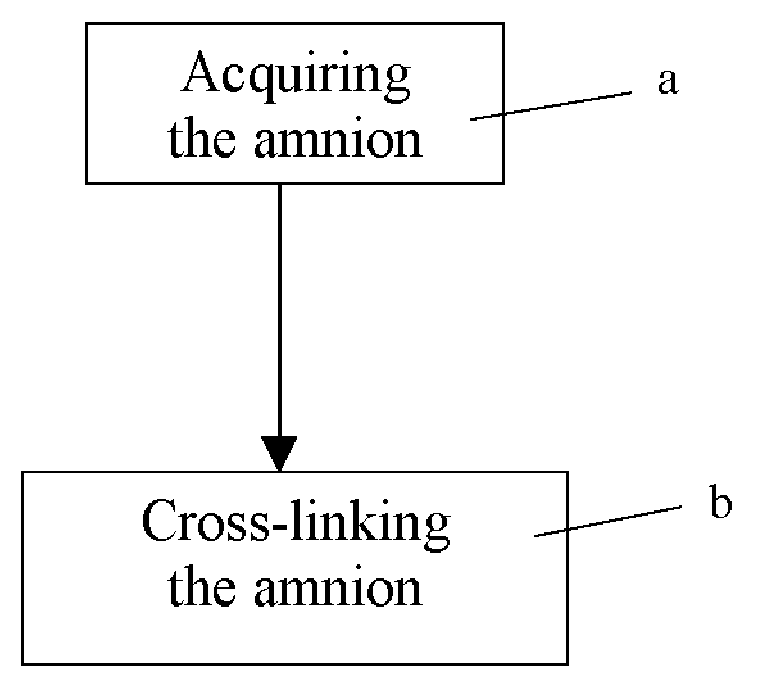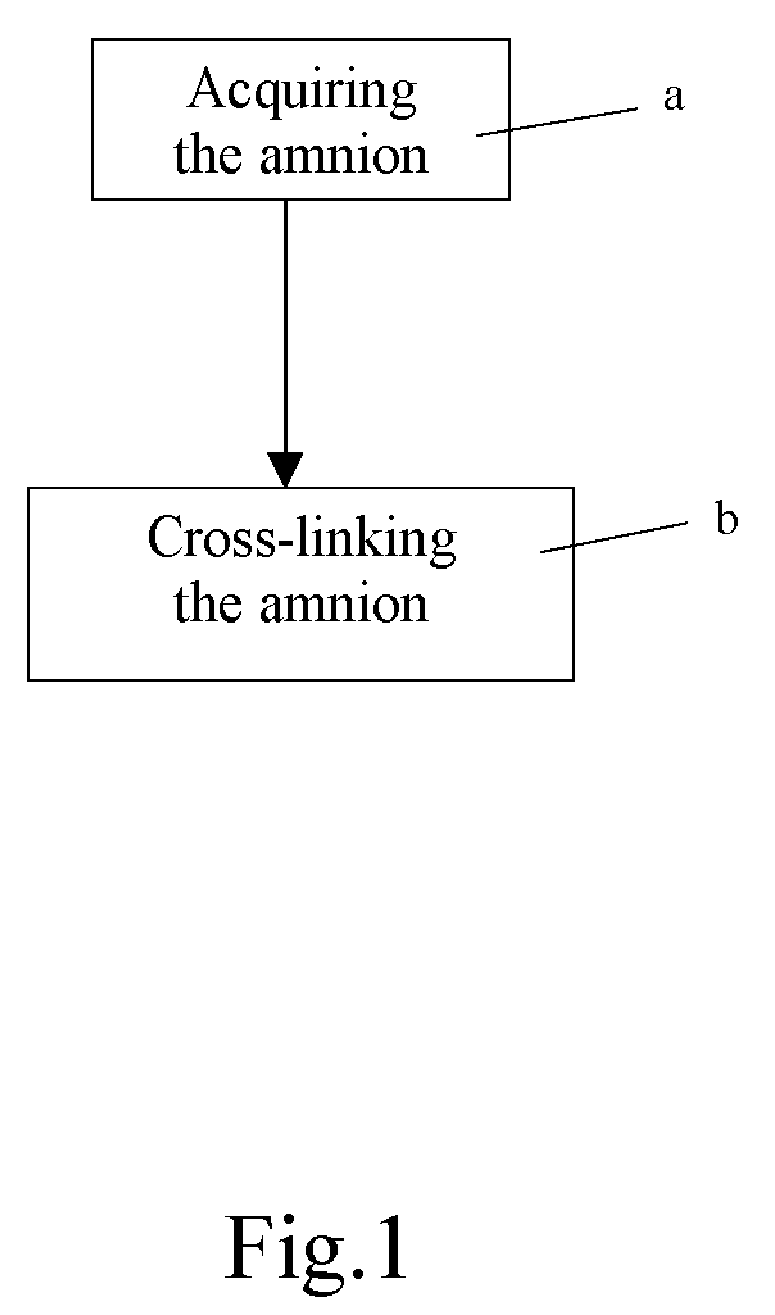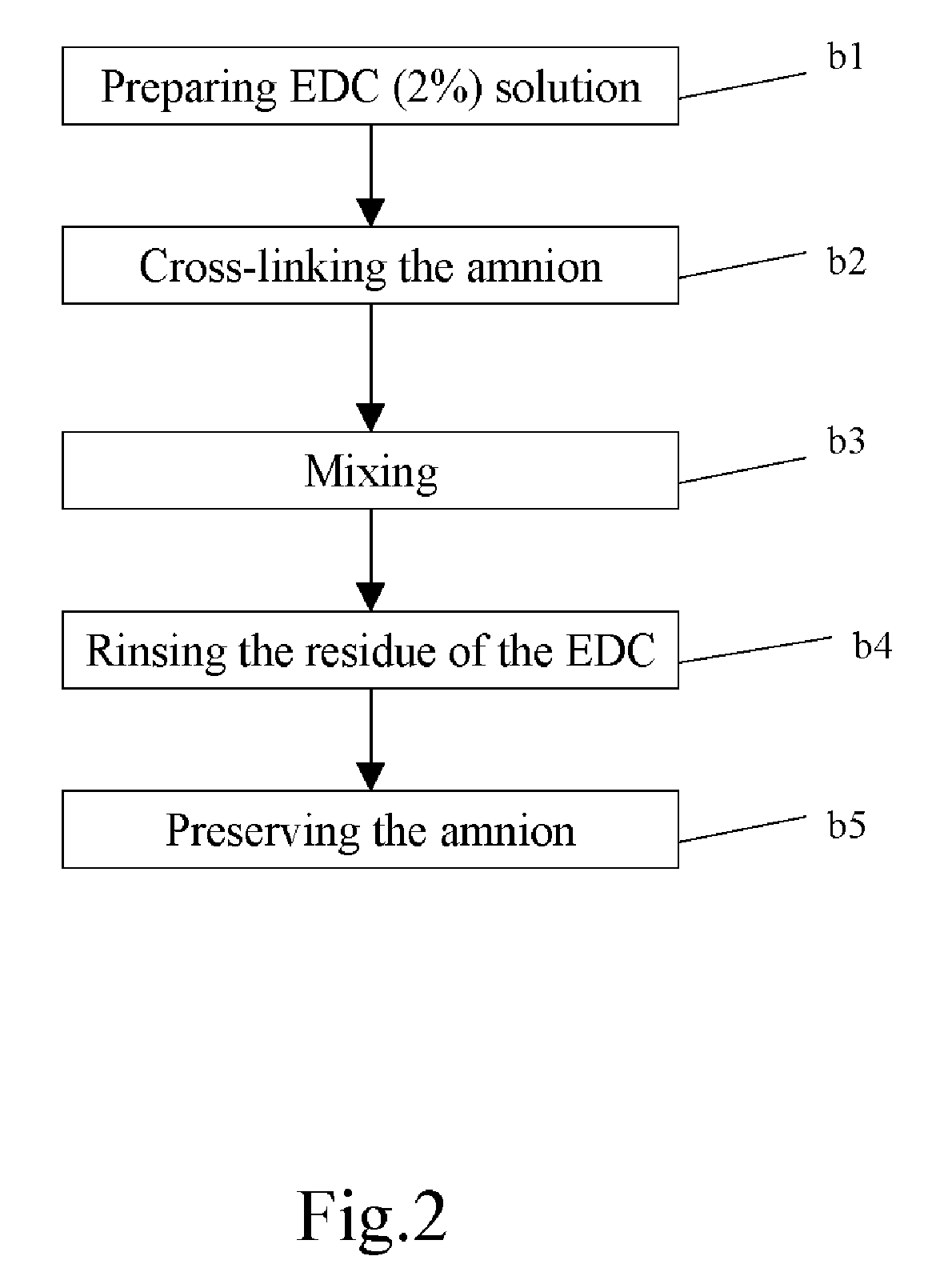Method of cross-linking amnion to be an improved biomedical material
a biomedical material and amnion technology, applied in the field of amnion cross-linking to be an improved biomedical material, can solve problems such as treatment failure, achieve the effects of prolonging the life of the stem cell property in the graft, and reducing the number of amnion oxidative stress
- Summary
- Abstract
- Description
- Claims
- Application Information
AI Technical Summary
Benefits of technology
Problems solved by technology
Method used
Image
Examples
Embodiment Construction
[0013]The present invention discloses a method of cross-linking amnion to be an improved biomedical material. With reference to FIG. 1, which illustrates a flow chart of a first preferred embodiment of the present invention and includes the steps of:
[0014](1) Amnion acquirement: The amnion is obtained from placenta after full-term delivery, the placenta is kept in an aseptic double-layered bag under 4° C. and then processed within 24 hours. In a biosafety chamber, the amnion is rinsed by copious aseptic normal saline so as to remove blood clots, then the amnion and chorion are dissociated; after cleaning the blood clots, the amnion is cut into a size of 6×6 cm and kept in 10 mL preservation solution which contains DMEM and glycerin with the ratio of 1:1, then the amnion is preserved in a −70° C. refrigerator. Upon processing, the amnion is taken out from the refrigerator and defrosted.
[0015](2) With reference to FIG. 2, which illustrates a flow chart of the cross-linking process of ...
PUM
 Login to View More
Login to View More Abstract
Description
Claims
Application Information
 Login to View More
Login to View More - R&D
- Intellectual Property
- Life Sciences
- Materials
- Tech Scout
- Unparalleled Data Quality
- Higher Quality Content
- 60% Fewer Hallucinations
Browse by: Latest US Patents, China's latest patents, Technical Efficacy Thesaurus, Application Domain, Technology Topic, Popular Technical Reports.
© 2025 PatSnap. All rights reserved.Legal|Privacy policy|Modern Slavery Act Transparency Statement|Sitemap|About US| Contact US: help@patsnap.com



